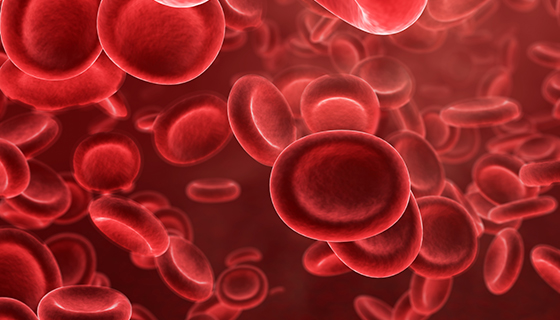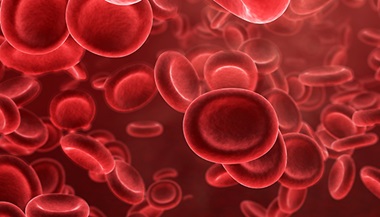Thrombocythemia
What is thrombocythemia?
Thrombocythemia is a disease in which your bone marrow makes too many platelets. Platelets are blood cell fragments that help with blood clotting. Having too many platelets makes it hard for your blood to clot normally. This can cause too much clotting, or not enough clotting.
What causes thrombocythemia?
There may be no single cause for thrombocythemia. It is believed to be caused by defects in the bone marrow’s platelet-making cells.
What are the symptoms of thrombocythemia?
Symptoms of thrombocythemia include:
-
Blood clots in arteries and veins, most often in the hands, feet, and brain
-
Bruising easily
-
Bleeding from the nose, gums, and GI (gastrointestinal) tract
-
Bloody stools
-
Bleeding after injury or surgery
-
Weakness
-
Headache and dizziness
-
Swollen lymph nodes
The symptoms of thrombocythemia may look like other blood disorders or health problems. Always see your healthcare provider for a diagnosis.
#TomorrowsDiscoveries: The Importance of Platelets - Kelly Metcalf Pate, D.V.M., Ph.D.
Dr. Kelly Metcalf Pate studies how platelets in the blood team together to stop bleeding and fight infection. Her team is studying whether a low platelet number impairs the body’s ability to defend itself from HIV.
How is thrombocythemia diagnosed?
Your healthcare provider will take your medical history and give you a physical exam. You may also have tests such as:
-
CBC (complete blood count). This test measures the amount of red blood cells, white blood cells, and platelets in your blood.
-
Blood smear. This test checks your platelets.
-
Bone marrow aspiration or biopsy. This may be done to see if your bone marrow is healthy. It involves taking a small sample of bone marrow fluid (aspiration) or solid bone marrow tissue (called a core biopsy). The sample is checked under a microscope.
How is thrombocythemia treated?
Your healthcare provider will figure out the best treatment based on:
-
Your age, overall health, and medical history
-
How sick you are
-
How well you can handle certain medicines, treatments, or therapies
-
How long the condition is expected to last
-
Your opinion or preference
Treatment may include:
-
Chemotherapy. This is most often given with an oral chemotherapy medicine (hydroxyurea), or with interferon alpha.
-
Plateletpheresis. This is a procedure to remove extra platelets from your blood.
Living with thrombocythemia
Work with your healthcare provider to develop a treatment plan that meets your needs.
It’s also important to:
-
Avoid smoking, which may increase blood clots
-
Control other health conditions such as high cholesterol, high blood pressure, and diabetes
-
Avoid things that may increase bleeding, including medicines such as aspirin.
-
Tell your healthcare provider if you notice bruising or other signs of bleeding.
Key points
-
Thrombocythemia causes your body to make too many platelets in the bone marrow.
-
Too many platelets can cause blood clots or bleeding.
-
Symptoms include blood clots and signs of bleeding, such as bruises, bloody stools, and weakness.
-
There may be no single cause for the disease. It is believed to be caused by defects in the bone marrow’s platelet-making cells.
-
Treatment includes medicines and removing extra platelets from your blood.
Next steps
Tips to help you get the most from a visit to your healthcare provider:
-
Know the reason for your visit and what you want to happen.
-
Before your visit, write down questions you want answered.
-
Bring someone with you to help you ask questions and remember what your provider tells you.
-
At the visit, write down the name of a new diagnosis, and any new medicines, treatments, or tests. Also write down any new instructions your provider gives you.
-
Know why a new medicine or treatment is prescribed, and how it will help you. Also know what the side effects are.
-
Ask if your condition can be treated in other ways.
-
Know why a test or procedure is recommended and what the results could mean.
-
Know what to expect if you do not take the medicine or have the test or procedure.
-
If you have a follow-up appointment, write down the date, time, and purpose for that visit.
-
Know how you can contact your provider if you have questions.






